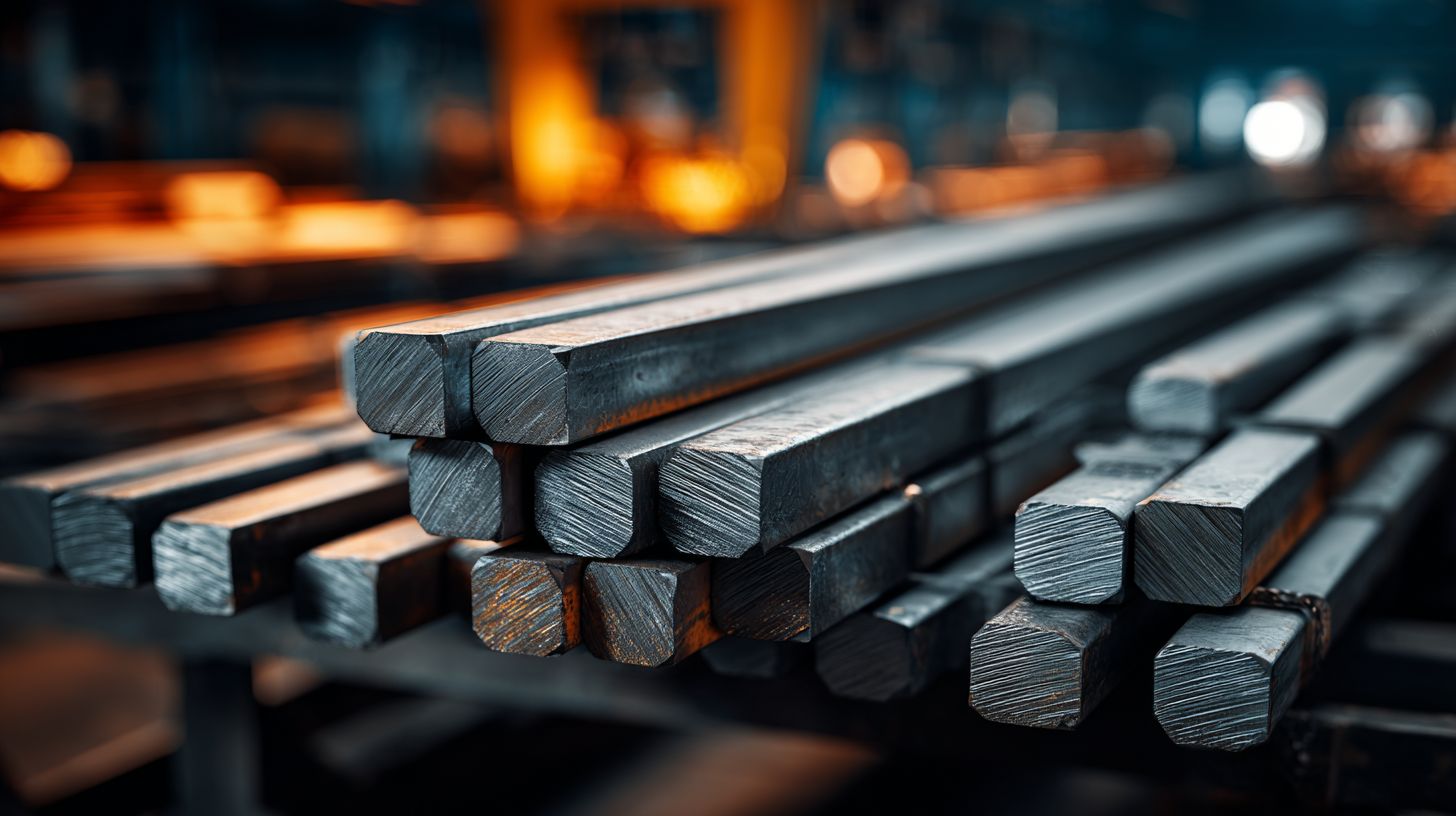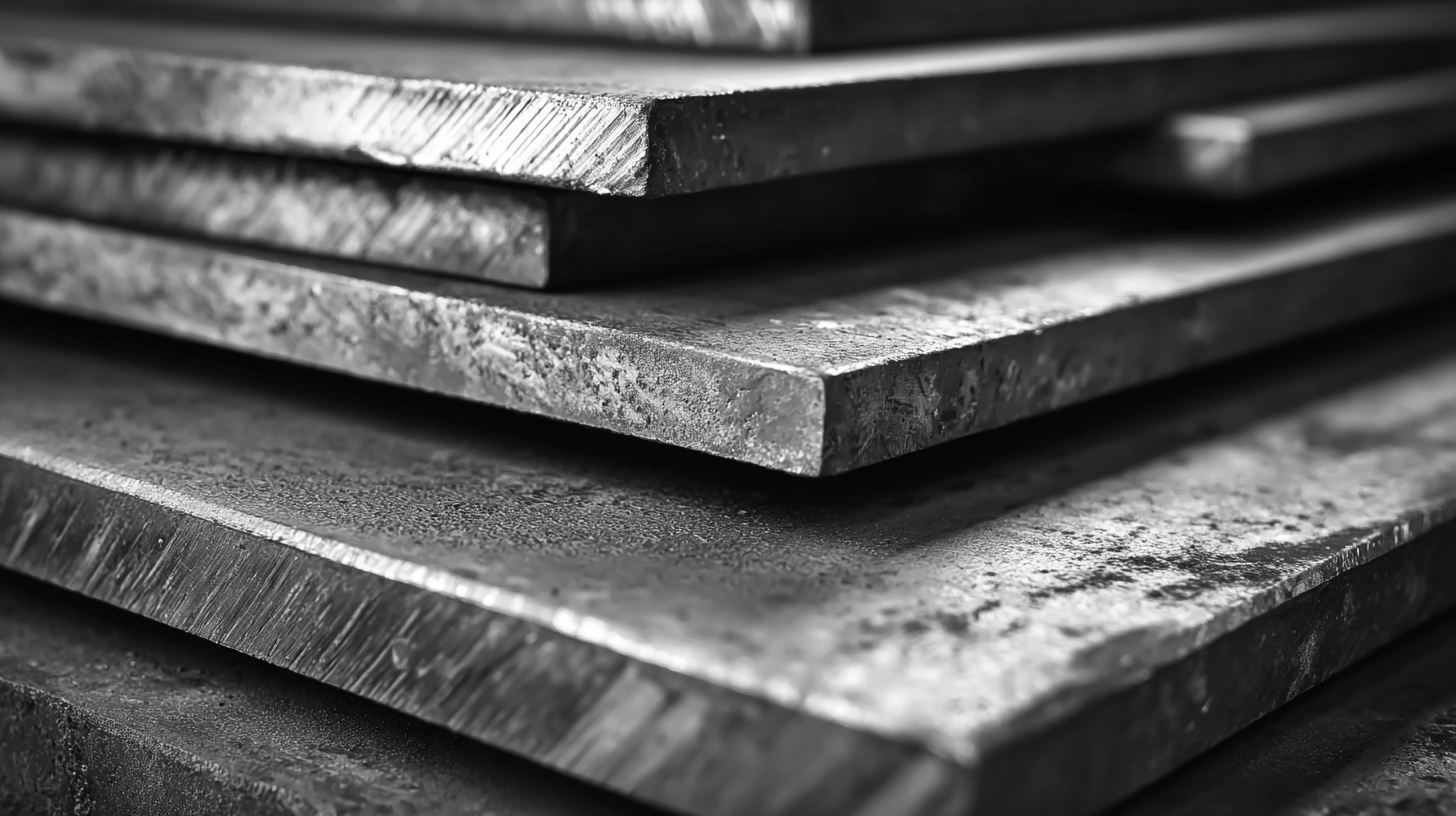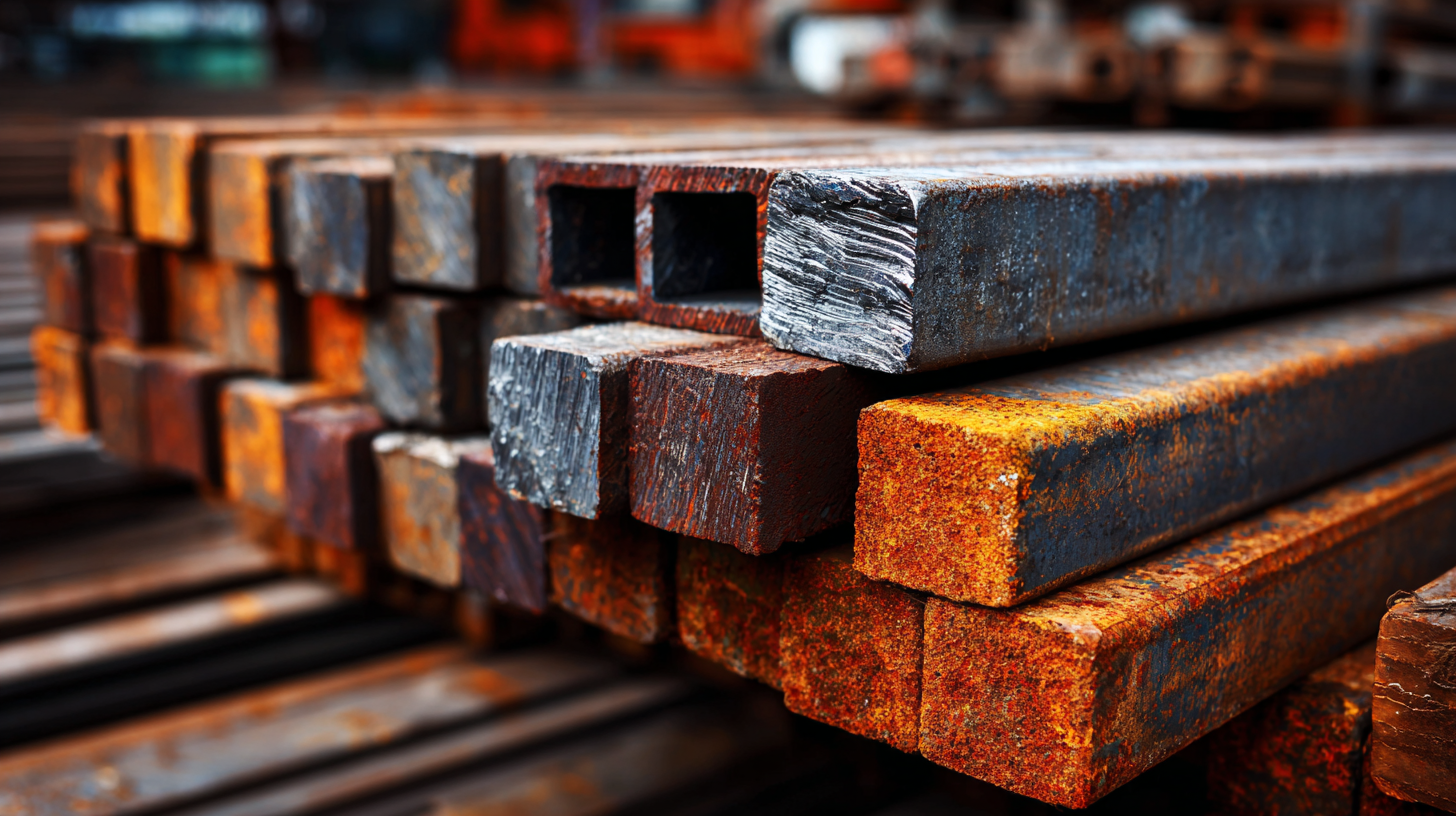Leave Your Message
-
Phone
-
E-mail
-
Whatsapp
In the ever-evolving landscape of manufacturing and construction, choosing the right type of materials is pivotal for ensuring durability, efficiency, and cost-effectiveness. Among the various options available, Steel Material stands out as an indispensable resource, owing to its unparalleled strength and versatility.

This comprehensive guide delves into the technical specifications of steel, exploring its diverse grades and forms while highlighting industry production standards that govern its application. Whether you are an engineer, architect, or a DIY enthusiast, understanding the nuances of Steel Material is essential for making informed decisions. From structural integrity to aesthetic appeal, this tutorial aims to equip you with the knowledge required to leverage steel in your projects effectively, ensuring optimal results every time you choose this remarkable material.
When discussing steel materials, it's essential to delve into their key properties and technical specifications.
Steel, a cornerstone of engineering and construction, is renowned for its strength, durability, and versatility.
 Stainless steel, in particular, has gained significant attention in specialized fields such as biomedical applications.
Recent studies have explored its properties through a risk perspective, utilizing methodologies like FMEA and TOPSIS to assess and classify these materials effectively.
Such analysis highlights the importance of understanding mechanical properties, corrosion resistance, and biocompatibility when selecting steel for critical applications.
Stainless steel, in particular, has gained significant attention in specialized fields such as biomedical applications.
Recent studies have explored its properties through a risk perspective, utilizing methodologies like FMEA and TOPSIS to assess and classify these materials effectively.
Such analysis highlights the importance of understanding mechanical properties, corrosion resistance, and biocompatibility when selecting steel for critical applications.
In addition to stainless steel, various alternative materials are gaining traction, such as natural fibers and their composites. This eco-friendly option showcases the trend towards sustainable materials while maintaining essential characteristics desirable in composite applications. The insights gained from comparative studies enhance our understanding of not just steel, but the broader landscape of materials available. Whether for automotive, construction, or innovative biomedical applications, knowledge of material properties remains a crucial factor in choosing the right material for the job.
As we look ahead to 2025, significant technological advancements are set to transform the steel production landscape. Reports from the World Steel Association indicate that innovations such as electric arc furnaces (EAFs) and hydrogen-based direct reduction processes are expected to reduce carbon emissions by up to 40% compared to traditional methods. EAFs, which utilize recycled scrap steel, are becoming increasingly popular, with projections suggesting a rise in global capacity that could surpass 750 million tons by 2025. This shift not only supports sustainability but also improves energy efficiency, as EAFs consume up to 60% less energy per ton of steel produced compared to traditional blast furnaces.
Further advancements are anticipated in process automation and digitalization within the steel industry. Smart manufacturing technologies and the Internet of Things (IoT) promise enhanced operational efficiency and real-time monitoring of production lines. According to a recent report from McKinsey, the integration of AI and machine learning could lead to a potential decrease in production costs by 20%-30% by 2025. This trend towards smarter steel production systems will not only streamline operations but also enhance product quality, positioning the steel industry for a more competitive future in a rapidly evolving market.
| Steel Type | Yield Strength (MPa) | Tensile Strength (MPa) | Elongation (%) | Hardness (Brinell) | Common Applications |
|---|---|---|---|---|---|
| Mild Steel | 250 | 400 | 20 | 120 | Construction, Automotive |
| Stainless Steel | 300 | 600 | 40 | 200 | Food Processing, Medical Equipment |
| High Carbon Steel | 850 | 1100 | 10 | 350 | Cutting Tools, Springs |
| Tool Steel | 600 | 900 | 15 | 250 | Molds, Dies |
| Alloy Steel | 500 | 700 | 16 | 180 | Automotive, Aerospace |
When it comes to the applications of steel, understanding the diverse industries that utilize various alloys is crucial. From construction to automotive manufacturing, steel plays an indispensable role. Carbon steel, for instance, is favored in the construction sector due to its strength and durability. In contrast, stainless steel, known for its corrosion resistance, is vital in medical and food processing industries.
Tips: When selecting steel for a specific application, consider the environmental conditions it will face. For instance, if the steel will be exposed to moisture, opting for a galvanized or stainless variant can enhance longevity. Additionally, be mindful of the alloy composition; elements like chromium and nickel can significantly improve resistance to oxidation.
Another notable application is in the energy sector, where steel alloys are integral to oil and gas pipelines. High-strength low-alloy (HSLA) steel provides the toughness needed for such demanding environments. Similarly, tool steels are essential in manufacturing processes that require high wear resistance, particularly in machining and drilling applications.
Tips: Always consult with a materials engineer to understand which steel type best fits your project's unique requirements. Proper selection not only enhances performance but also contributes to cost-effectiveness in the long run.
When considering alternatives to traditional steel, it's essential to weigh the pros and cons of various materials. While steel is recognized for its strength and durability, alternatives like aluminum, fiberglass, and composite materials have gained traction in specific applications. Aluminum, for instance, is lighter and resistant to corrosion, making it ideal for industries like aerospace and automotive. However, its tensile strength is lower than steel’s, which can limit its use in applications requiring heavy load-bearing capacity.
On the other hand, composites, often integrating various materials, offer unique advantages such as reduced weight and increased resistance to environmental degradation. However, their production processes can sometimes be more complex and costly compared to traditional steel. Additionally, the recycling and environmental impacts of certain alternatives, like fiberglass, can raise sustainability concerns. Understanding these trade-offs is crucial for making informed decisions based on the specific requirements of each project, whether it's construction, manufacturing, or automotive design.

The future of steel materials is shaped by innovative advancements and sustainability practices. According to the World Steel Association, global steel demand is projected to reach 1.87 billion metric tons by 2025, driven largely by infrastructure development in emerging economies. The emphasis on lightweight and high-strength steel alloys is becoming increasingly crucial as industries strive to enhance performance while minimizing material use. Advanced manufacturing techniques, such as 3D printing and additive manufacturing, are laying the groundwork for customized steel solutions that meet specific engineering requirements.
Tip: When selecting steel materials, consider their lifecycle impact. Opting for recycled steel can significantly reduce carbon footprints, as steel is one of the most recycled materials globally, with around 85% of scrap steel being reused.
Additionally, research indicates that integrating smart technology into steel production processes can lead to increased efficiency. A report from McKinsey highlights that the application of AI in steel manufacturing could cut operational costs by up to 20%. As digital trends reshape the steel industry, manufacturers must prioritize automation and data-driven decision-making to stay competitive.
Tip: To ensure optimal performance and sustainability, regularly evaluate your steel suppliers for their adherence to environmental regulations and innovative practices in material production.
